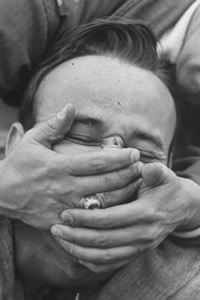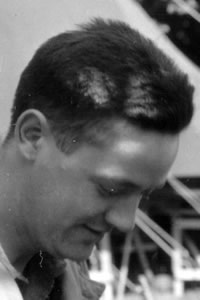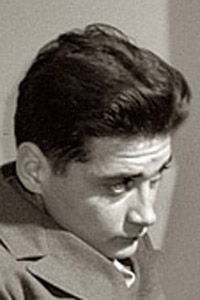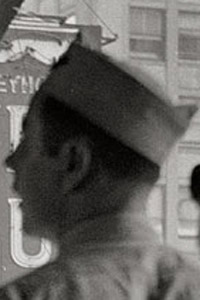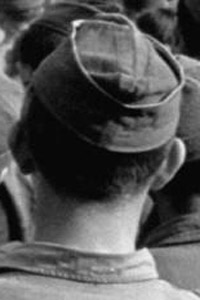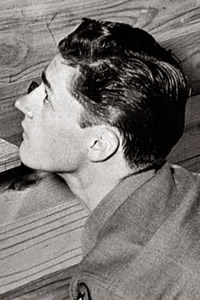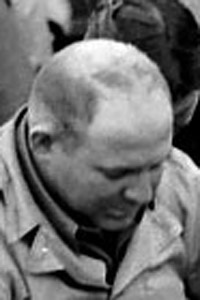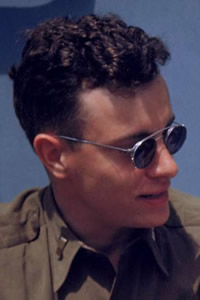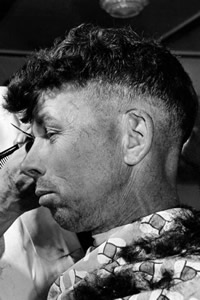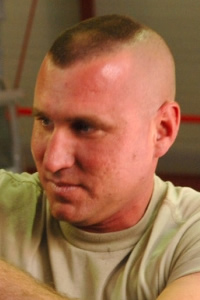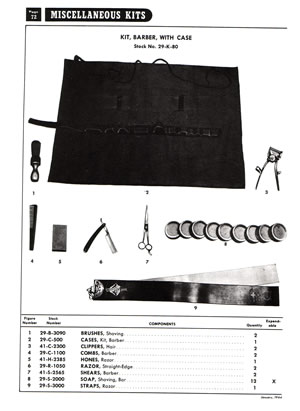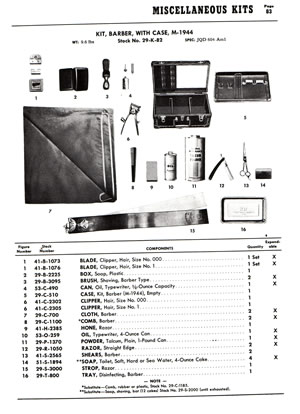GI Hairstyles: Original Images, Observations and Recommendations
Date Written: Winter 2010
Author: Chris Guska - 90th IDPG
Research Assistance: Charles McFarlane - 90th IDPG
Defining the terms and styles:
I haven't met or known any other men that have seriously discussed hair in a casual setting. That being said, It was useful for me to learn a little bit about the terms and definitions relating to hair and styles so I could tell my barber specifically what I wanted instead of pointing and grunting - or long on top, short on the sides.
Much of the following is drawn from what I view as an excellent guide to men's haircuts - Hudson's Guide: Men's Short Haircuts and the Barber Shop from FTMGuide.org.
While the hosting site may be controversial in some circles, the information contained on men's haircuts and grooming is far better documented than other sites I have found.
I have taken the liberty of re communicating some of the material presented in Hudson's Guide, with some focus and application to WWII and US GI haircuts. I have included inserts from original photos to illustrate the terms being defined.
Geography:
I'm going to start defining terms from front to back, top to bottom when it comes to a haircut. This may seem remedial, but I want to be on a level playing field with a common set of terms.
Tools:
While this section may seem redundant, there might be some interesting info mixed in with my own opinions.
The army issued two different Barber kits during the war, in addition to the various other tools acquired by GI's through other sources.
Kit, Barber, With Case - Stock No. 29-K-80
Kit, Barber, With Case, M-1944 - Stock No. 29-K-82 Spec JQD 604 Am1
Scissors (Shears)-
Hair cutting scissors are a somewhat specialized breed. Just as you would expect today to see specialized scissors at the barbershop - the same tools of the trade were around in the 40's.
Thinning shears-
These look like a pair of scissors with one blade having slots that look like a comb. These scissors are designed to remove bulk from thick hair so that it will lay in areas. While not an item issued in the Army barbers kits - it may be an item used by your modern barber or stylist to achieve the look you're searching for.
Clippers-
Hand operated clippers have been around for a long time. While the clippers you may experience today are electric and those issued were hand powered - they ultimately serve the same purpose.
The army issued clippers in size No. 000 and size No. 1. More about clippers and guard sizes below.
About Guards-
Clippers come in a variety of sizes, with the option of clip on "comb" style guards that act as a standoff from the blade to the scalp to cut the hair to a uniform length. There is some variation in sizes between makers, but below is a general guide that will get you in the right ballpark.
00000 - 1/125"
0000 - 1/100"
000 - 1/50"
0A - 3/64"
1 - 3/32"
1A - 1/8"
1.5 - 5/32"
2 - 1/4"
3.5 - 3/8"
3.75 - 1/2"
1.) Defining Terms and Styles (you are here)
2.) Analysis and Conclusions
3.) What to ask your barber
A.) The images
90th IDPG Original Research



